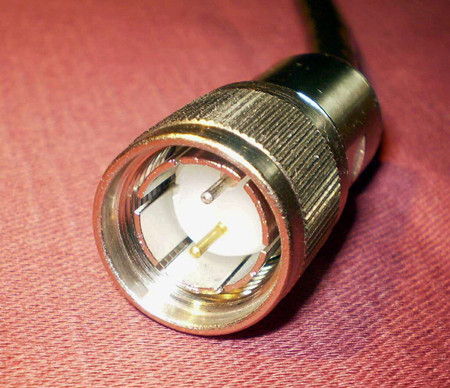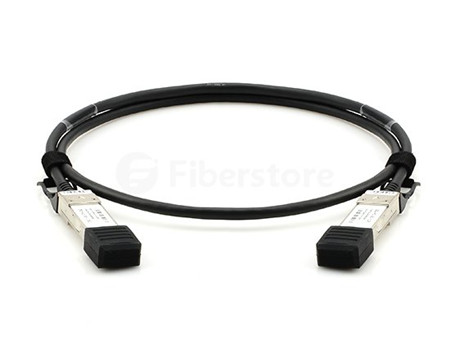 Optical fiber cabling had gone through rapid development over recent years and maintained its leading role in telecom field. While twinax cable still remained a good way to access the networking industry trends over the last three decades and presented the highest longevity among all media. Twinax cable (see in following Figure) is a type of cable similar to coaxial cable that has two inner conductors instead of one. And owing to its cost efficiency, it is commonly used in short-range high-speed differential signaling applications. Currently there is a twinax cable which comes in either passive or active copper cable. So what is the difference between them? Today’s passage will provide a satisfying solution to you.
Optical fiber cabling had gone through rapid development over recent years and maintained its leading role in telecom field. While twinax cable still remained a good way to access the networking industry trends over the last three decades and presented the highest longevity among all media. Twinax cable (see in following Figure) is a type of cable similar to coaxial cable that has two inner conductors instead of one. And owing to its cost efficiency, it is commonly used in short-range high-speed differential signaling applications. Currently there is a twinax cable which comes in either passive or active copper cable. So what is the difference between them? Today’s passage will provide a satisfying solution to you.
Describing Passive and Active Twinax Cable
A passive cable carries a signal over short lengths (5m or under) of copper with no additional components to boost signal. While an active copper twinax cable contains electrical components in the connectors that boost signal levels. This makes active twinax cables a little more expensive than passive copper twinax cables; however, they can connect the Converged Network Adapter (CNA) to a top-of-the-rack switch over longer distances than passive twinax cables.
Twinax Active vs. Passive: How to Choose the Right Twinax Cable?
Length and signal strength are always two important factors you should look into when requiring a cable for an application. Typically, we can see passive twinax cables being used between the server and the Top of Rack (ToR) switch. The upside in this configuration is that the passive twinax cabling connection is much cheaper than the cost of an optical link. The downside is that you are limited in distance and there’s also some cable interoperability issue you’ll need to deal with. Passive twinax cables are rated for ranges up to 5m and provide a good working solutions at a great cost.
When the distance between connection points exceeds 5m, it is highly recommended to use active twinax cables to ensure signal is transferred all the way through. The downside is that they are more expensive and use more power. The upside is that you don’t have to worry about distance (up to 300 meters) and, perhaps more importantly, you don’t have to worry about which vendor’s cable you use and the signal is improved and gives peace of mind by creating a trustworthy connection. In regards to active versus passive twinax cables, it depends on what you are connecting together.
QSFP+ Copper Cables—A Cost-effective Application of Twinax Cable
QSFP+ direct attach copper cable assemblies offer a highly cost-effective way to establish a 40 Gigabit link between QSFP+ ports of QSFP+ switches within racks and across adjacent racks. QSFP+ cable is an extension of the established interface system SFP+ that is mainly used in short distance. 40G QSFP+ to 4SFP+ copper breakout cable and QSFP to QSFP copper direct attach cable are the two common types of 40G QSFP+ copper twinax cables.
QSFP to 4SFP+ twinax breakout cables are suitable for very short distances and offer a very cost-effective way to connect within racks and across adjacent racks. Take QSFP-4SFP10G-CU1M as an example, this breakout cable connects a 40G QSFP port and four 10G SFP+ ports of Cisco switches and operates at a link length of 1m. While a QSFP+ to QSFP+ passive copper twinax cable consists of a cable assembly that connects directly into two QSFP+ modules, one at each end of the cable. This cable use integrated duplex serial data links for bidirectional communication and is designed for data rates up to 40Gbps. There are various QSFP+ to QSFP+ passive twinax cables branded by famous brands, like Cisco, HP, Juniper, Brocade, etc. The following picture shows a Cisco QSFP-H40G-CU3M Compatible QSFP+ to QSFP+ passive copper cable.

Summary
There isn’t a truly visual way to tell the difference between active and passive twinax cables. Therefore when you are requiring a twinax cables, please follow the instructions that I have listed above or you should ask your vendors for expertise suggestion. FS.COM offers a large variety of SFP+ cables and QSFP+ twinax cables that are well tested and compatible with major brand. If you have any inquiry of our products, please feel free to contact us.
